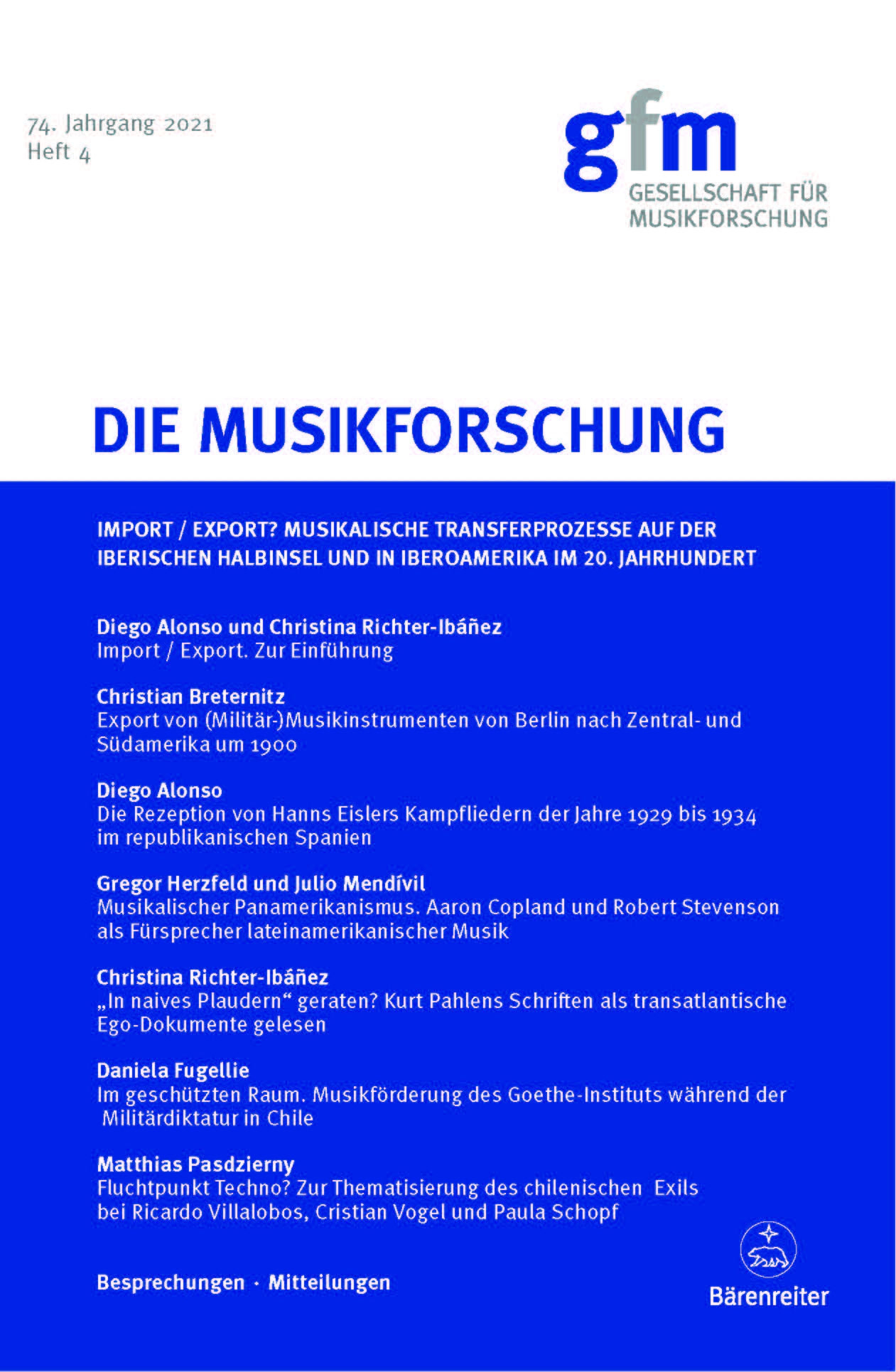Die Rezeption von Hanns Eislers Kampfliedern der Jahre 1929 bis 1934 im republikanischen Spanien
Abstract
From the mid-1930s onwards, Hanns Eisler's most popular Kampflieder from 1929–1934, namely Kominternlied, Einheitsfrontlied, Der rote Wedding and Solidaritätslied, became relatively popular amongst members of the Spanish labour movement who were sympathetic to communist ideology. During the Civil War, these songs became an important part of the pro-Republican, antifascist musical propaganda. The first part of this article examines the propagandistic contexts in which the Spanish and Catalan versions of these songs were performed, edited, published, broadcasted and disseminated through recordings in 1930s Spain. I discuss the importance of Spanish-Soviet relations for the reception of these songs is discussed. The second part analyses the compositional influence of Eisler’s Kampflieder on Spanish composers of “canciones de lucha” (battle-songs). As case study I analyse Enrique Casal Chapí’s 1937 song Los campesinos (Die Bauern). My study is part of recent efforts to examine the Kampflied-genre as a key element in the transnational networks of antifascist musical propaganda in the interwar period. (Vorlage)






